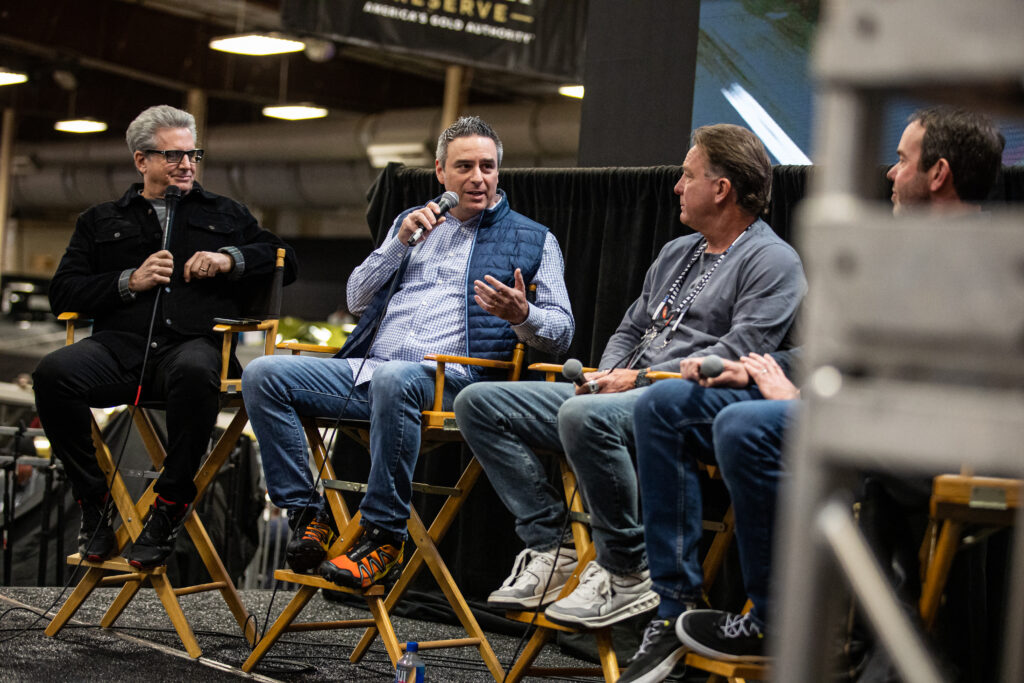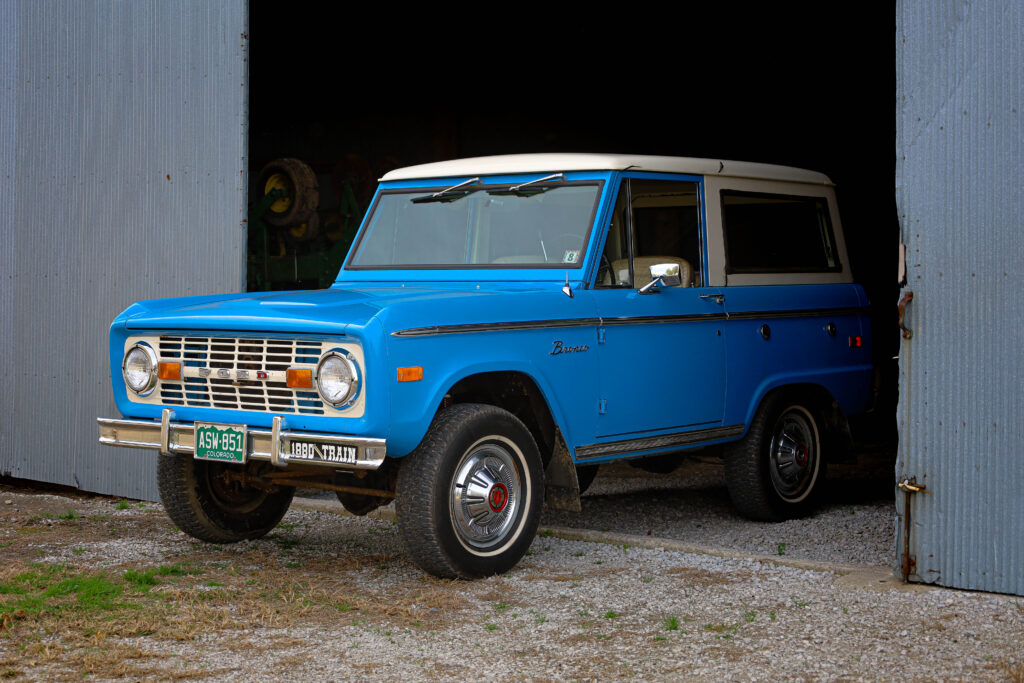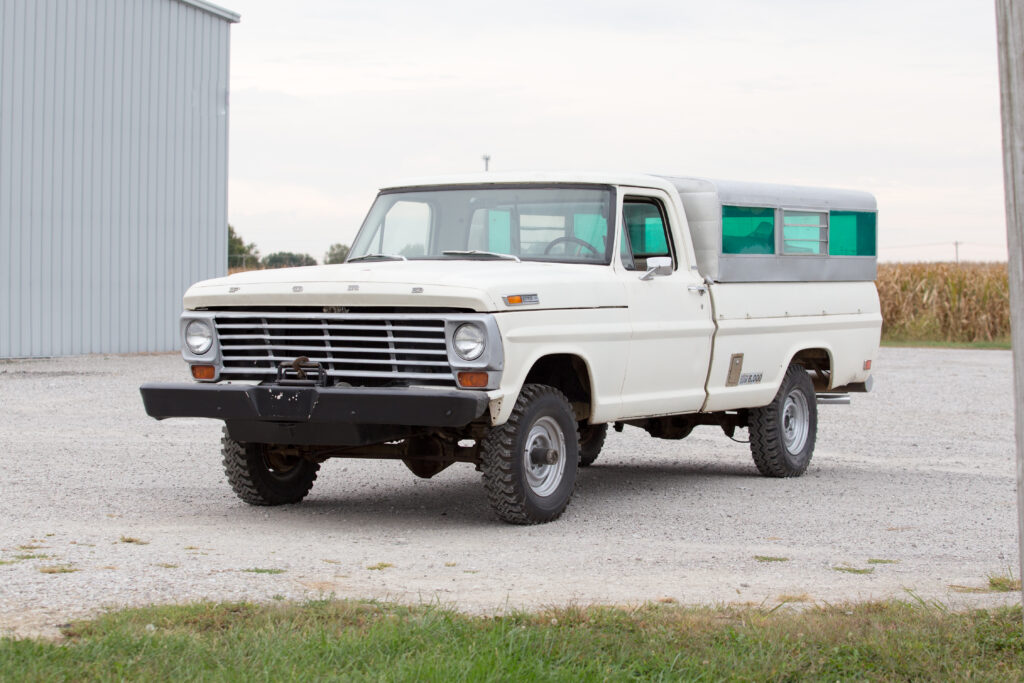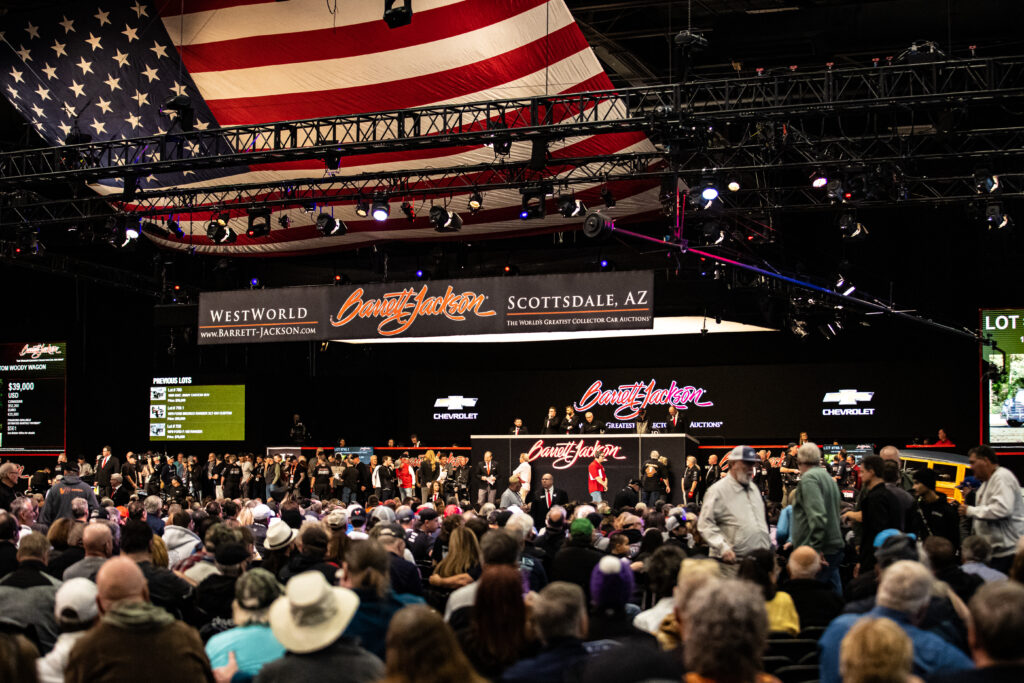The collector car hobby is in a constant state of evolution. As each new generation of automotive enthusiasts ages into its prime earning years, the vehicles they covet move to the forefront. Sometimes market changes make people recognize the virtues of previously ignored vintage vehicles.
The collector car market is currently undergoing one of those tectonic shifts, and vintage trucks and SUVs are the beneficiaries. What does that mean for the collectible vehicle market?

Gateway Bronco gathered some experts to explore this subject at a panel discussion moderated by Alan Taylor, host of THE DRIVE with Alan Taylor, during Barrett-Jackson Scottsdale. Joining Burgett on the panel were:
· Dennis Collins, collector, restorer, and proprietor of Collins Bros in Wylie, Texas, host of Coffee Walk, along with regular TV appearances as a part of Gas Monkey Garage.
· Colin Comer, owner of Colin’s Classic Automobiles in Milwaukee, Wisconsin, a veteran of the collector car industry, contributor for Hagerty magazine, respected author of numerous Shelby books and founder of MCACN, Muscle Car and Corvette Nationals.
· Sarah “Bogi” Lateiner, master mechanic and founder of All Girls Garage.

Burgett pointed out patterns developing around vintage SUVs and trucks that mimic what happened with the muscle car market. When he was a teenager, he saved an impressive amount of money through his hard work because his heart was set on a 1967 Shelby GT500 Mustang for sale locally. Although by no means an inexpensive car, values on Shelby Mustangs had not yet taken off into the stratosphere. “At the time, no one ever believed that a Mustang could become a $100,000 car. It was unfathomable. No way could it ever occur,” Burgett said.
Ultimately, the teenage Burgett did not purchase the Shelby. Many years later, following success in business, he was able to purchase two 1967 Shelby Mustangs and saw with his own eyes just how far Shelby values had increased in the 30 year span he had to wait for his own Shelby. He believes the Bronco is following the same path.

“In 2019, I bought an original-paint 1974 Bronco with only 25,000 miles on it. We had to pull it out of a Quonset hut because the car didn’t run,” Burgett recalled. “The Bronco’s owner pulled it out with his 1972 F100 pickup truck, also an original-paint vehicle. I liked the truck so much that I asked if I could buy them both. I paid $24,500 for the Bronco and I paid $2,500 for the truck. That Bronco is sitting on our books valued at $115,000. That $2,500 truck that I bought at the same time, I’m now selling similar original-paint, unrestored, pickup trucks for $18,000 to $25,000 out of our collection to make room for more interesting original Broncos. The truck market appears to be following a similar slope about 10 years delayed from the Bronco market.
“The Broncos are following the same trend line as the early Shelbys. Few ever believed that this little SUV would ever become a $100,000 vehicle. I think in 2005, the Bronco was like the Shelby in 1985. You could have purchased it for $6,000-$10,000.”

Comer is witnessing similar action in the market. “Without question, vintage trucks and SUVs are now Bona fide collectibles and, in my opinion, the hottest segment of the collector vehicle marketplace today,” he said. “Buyers seem to be split into two camps. There are those who want a bone-stock truck exactly as it was in period to immerse themselves in the full vintage experience. They will perhaps use it sparingly or just place it in a collection for what it represents, much like a traditional collector car. The second camp are people who want a fully modernized, resto-modded vintage truck to enjoy the vintage style but with all the modern amenities. This will allow them to use it frequently and even for family road trips or commuting duties.”
With so much attention turned toward the vintage truck and SUV market, it’s important for buyers to do their research before making a purchase. “Decide which of the two above camps you fall into and buy the absolute best truck for you,” Comer continued. “If you’ve always wanted a 1964 IH Scout, then by all means, get one! But no matter what truck you decide on, buy the best example of it you can find. If buying an original one, have an expert on that make and model evaluate it to make sure there are no hidden sins. And if buying a resto-modded example always buy one that was built by a known high-end specialist in that exact vehicle. Don’t settle for a Bronco built by a shop that is known for Camaros and thought they’d try their hand at building a Bronco!”

Trucks and SUVs have always been appealing for their sheer practicality, and the same thing applies to collectible trucks. “Cars present another issue for some clients,” Burgett said. “They don’t want to drive a muscle car because it’s fast, loud and can be considered a mid-life crisis car. But the Bronco is a family vehicle. With a Bronco, four people can comfortably fit in it and you can throw the dog or some gear in the back. You can drive to a soccer game or to a family event and nobody knows how expensive it is. It’s a ‘stealth wealth’ model.”
These trends aren’t restricted to classic cars but are also reflected in new vehicle sales. “The trend of truck versus car matches the dynamic seen by automakers with daily drivers, also,” Burgett said. “Ford stopped making automobiles, except for the Mustang. They’re a truck, crossover and SUV manufacturer. What is the number one vehicle on the planet? It’s the Ford F150. It’s a truck, it’s not a station wagon or a hatchback, it’s not a front-wheel drive car. The market for the vintage side is following the same market as modern cars.”
More information on Seth’s Shelby GT500 – YouTube
Subscribe to our Newsletter!
Stay up to date with our latest builds, For Sale Inventory and more.
I agree to receive recurring marketing text messages from Gateway Bronco at the number provided, including offers, updates, and reminders. Message and data rates may apply. Message frequency varies. Reply STOP to unsubscribe. Consent is not a condition of purchase. See our Privacy Policy and Terms.
 Instagram
Instagram